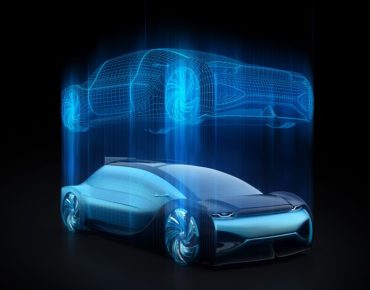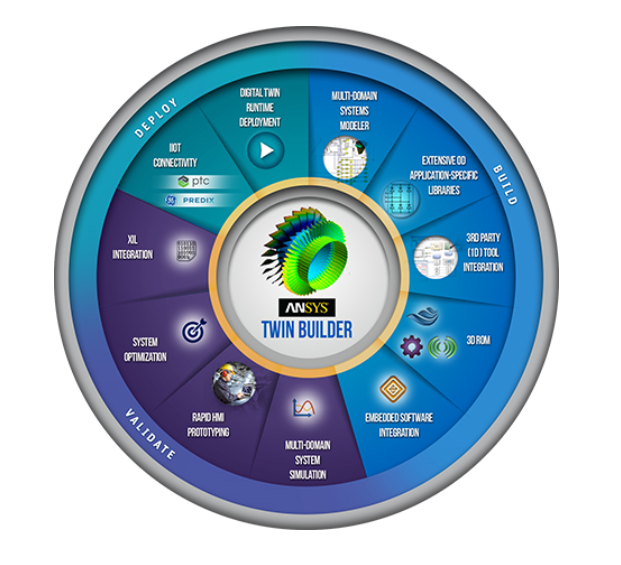ANSYS, Azure Pair up for Digital Twin Cloud Offering

ANSYS, with its Twin Builder software, has teamed with Microsoft, and its Azure public cloud Digital Twins Platform, on a joint product strategy to take on the rapidly emerging digital twins market, which Gartner last year called a top 10 technology trend for 2019.
Digital twins software constructs a virtual, multi-dimensional representations of a physical environment, process or machinery, incorporating historical and real-time data to model for upcoming maintenance requirements and the impact of process changes, among other use cases. The ANSYS-Azure offering lets users to compile simulations into runtime modules that can execute in a Docker container and be integrated automatically into IoT processing systems.
“With the combined Microsoft Azure Digital Twins-ANSYS physics-based simulation capabilities,” said Tony Shakib, Azure IoT business acceleration leader, in a blog, “customers can now simulate baseline and failure data resulting in accurate, physics-based digital twins models, use physics-based predictive models to increase accuracy and improve ROI from predictive maintenance programs, (and) leverage ‘what-if analyses’ to simulate different solutions before selecting the best one.”
Gartner has identified digital twins as one a top 10 strategic technology trends two years in a row. The analyst firm has reported that while 13 percent of organizations implementing IoT have adopted digital twins, 62 percent are in the process or plan to do so. Within three years, two-thirds of companies will have deployed a digital twin, Gartner reported.
 An underpinning of the nascent digital twins and IoT markets is Gartner’s oft-quoted prediction that by next year there will be 20 billion connected devices around the world. Analyst firm MarketsandMarkets estimates that the digital twins industry will reach $3.8 billion this year and $35.8 billion by 2025. Shakib said Microsoft’s IoT Signals research found that 85 percent of decision-makers have adopted IoT and 74 percent have projects underway. Top use case, according to Microsoft: operations optimization (56 percent), “to reap more value from the assets and processes they already possess,” Shakib said. “That’s why digital twins is so important right now because it provides a framework to accomplish this goal with greater accuracy than was possible before.”
An underpinning of the nascent digital twins and IoT markets is Gartner’s oft-quoted prediction that by next year there will be 20 billion connected devices around the world. Analyst firm MarketsandMarkets estimates that the digital twins industry will reach $3.8 billion this year and $35.8 billion by 2025. Shakib said Microsoft’s IoT Signals research found that 85 percent of decision-makers have adopted IoT and 74 percent have projects underway. Top use case, according to Microsoft: operations optimization (56 percent), “to reap more value from the assets and processes they already possess,” Shakib said. “That’s why digital twins is so important right now because it provides a framework to accomplish this goal with greater accuracy than was possible before.”
“As industrial companies require comprehensive field data and actionable insights to further optimize deployed asset performance,” said Eric Bantegnie, ANSYS VP/GM, “ecosystem partners must collaborate to form business solutions. ANSYS Twins Builder’s complementary simulation data stream augments Azure IoT Services and greatly enhances its customers’ understanding of asset performance.”
Investment in digital twins has happened most aggressively among manufacturers, to track the performance of remote IoT-enabled assets, machinery and vehicles. Shakib said use case simulations for the Microsoft-ANSYS platform include: evaluate current versus target performance of assets; manage asset lifecycles, retiring systems at the right time to avoid over-investing in obsolete capabilities; predictive maintenance, to avoid unplanned downtime; system orchestration – intelligent linking of equipment, systems and networks to “orchestrate production across plants, campuses and regions, attaining new levels of visibility and efficiency,” said Shakib; employee training; removal of physical barriers to experimentation, enabling users to simulate tests and conditions for remote assets.
“Longer-term, companies can more easily operate global supply chains, production networks, and digital ecosystems through the use of IoT, digital twins, and other tools,” Shakib said. “Enterprise teams and their partners will be able to pivot from sensing and reacting to changes to predicting them and responding immediately based on predetermined business rules. Utilities will be better prepared to predict and prevent accidents, companies poised to address infrastructure issues before customers complain, and stores more strategically set up to maintain adequate inventories.”










